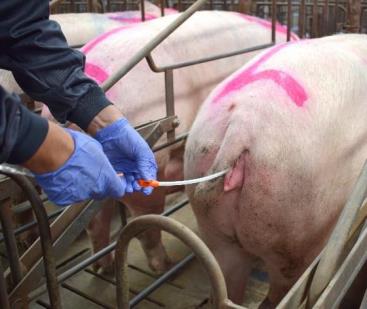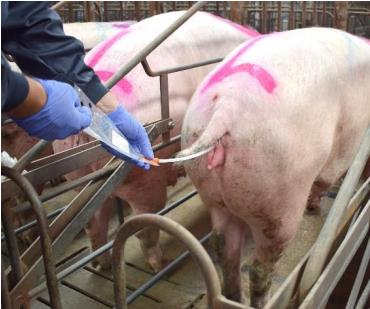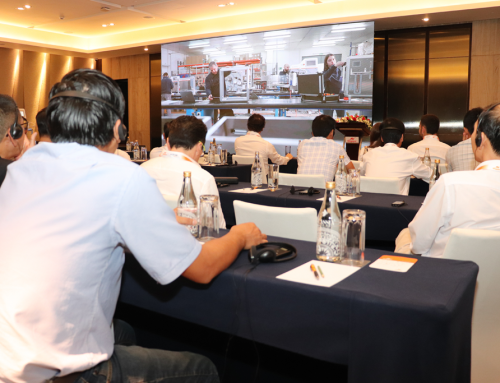Artificial insemination is depositing the contents of the semen dose through the cervical region of the female reproductive system, using a simple or composite probe in the cranial portion of the cervix (1:traditional), the body of the uterus (2: post-cervical) or the beginning of the uterine horn (3: deep intrauterine).
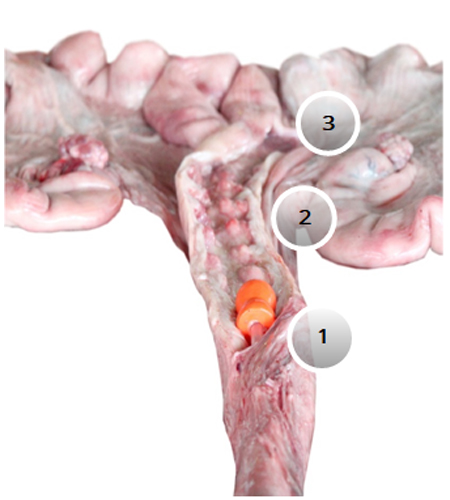
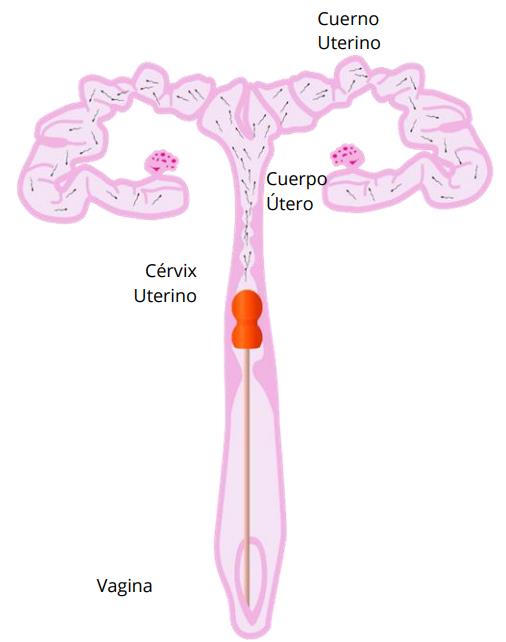
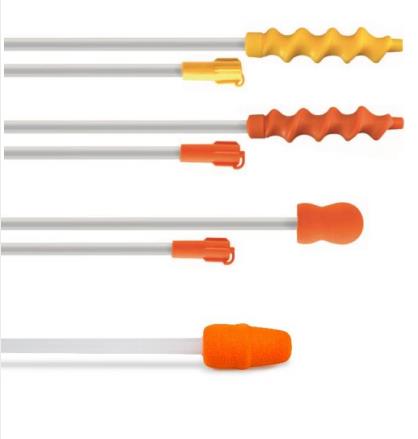
Types of catheters used in traditional insemination:
SPIRAL: The tip of the catheter simulates the boar glans. It has a huge adaptability and stimulation capacity of the genital tract. As the previous one, it requires a rotational movement during its placement and insertion.
FOAM: A very simple use catheter because it does not require any turn to place it. It is a very soft catheter with a huge adaptability that works very well avoiding backflow problems. Its thickness and shape makes it a very stimulating cannula for the female genital tract.
FOAM FOR GILTS: This catheter does not need any turn to place it. It has been designed specifically for gilts reproductive tract, avoiding backflow.
PROCE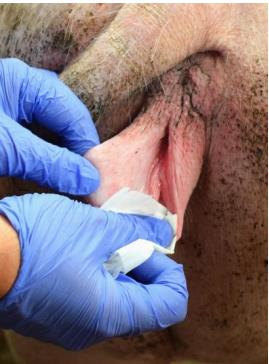 DURE
DURE
Firstly, one or several boars (if they are twinned boars) have to be placed into the corridor and placed in front of the sows. The boar has a stimulating effect on the sows, which will favor the upward uterine contractions (dose absorption).
Before starting the process, it is advisable to have all the animals located and all materials prepared.
- Clean the vulva of the sows to be inseminated using a paper towel, with a disposable paper wipe. Remove any dirt from outside and inside the vulva of each sow, so that it is not pushed farther in the vagina by the catheter. These wipes may be humid, moistened with antiseptic solution, or simply rolls of blotting paper. Make sure the vulva is dry, as any dissolved dirt can easily be pushed inside the animal.
2. Hold the catheter by the latter part and carefully apply lubricant gel to the tip.
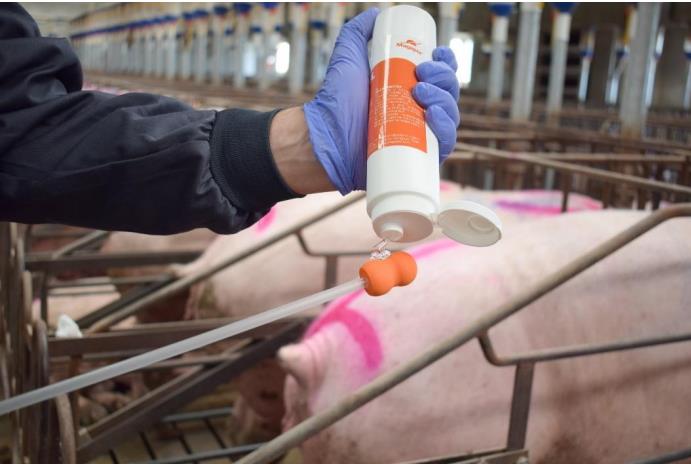
3. Inserting the catheter:
3.1 Open the vulva with one hand and insert the catheter with the other, making sure the catheter only comes into contact with the inside part of the vulva.
3.2 Insert the catheter by pointing the tip upwards (30º angle) to avoid entering the urinary tract. If this is done badly and is inserted through the urinary meatus, a yellowish or bloody fluid (urine or blood). If this happens, it is advisable to discard it and use another one.
3.3 Insert the catheter carefully to avoid hurting the sow and when a resistance is noticed (cervix zone) stop. With foam catheters it is not necessary to rotate the catheter to anchor it.
3.4 It can be inside a couple of minutes before inserting the dose. This helps to stimulate upward uterine contractions and the cervix relaxation. At that time, it is possible to put more catheters avoiding idle times.
3.5 Before inserting the dose, make sure the catheter is well attached making a slight pull in flow direction. In case it is not, repeat point 3.3.

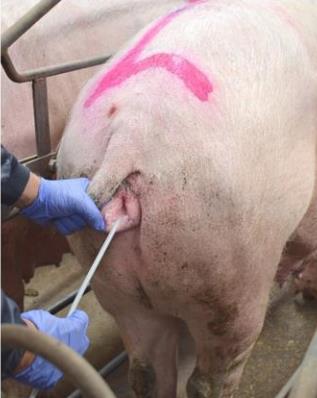
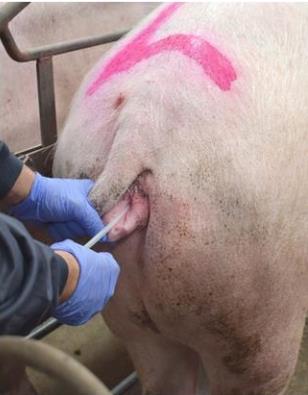
4. Inserting the semen dose:
No clear improvement between inseminations with warm (36-37 ºC) or cold (15-17ºC) semen has been described experimentally or has been noted in the literature, so our recommendation is to use cold semen (15-17ºC).
After the proper dose homogenization, simply attach the semen dose to the end of the catheter and let the contents flow into the female’s tract.
Then, insert the semen dose in the catheter and let the sow absorb it through the peristaltic contractions.
It is not advisable to press the seminal dose to accelerate the insemination process because in most of cases, the contrary effect is got (important backflow and the majority of the dose content falls down to the ground). In case over 25% of reflux is seen, it is advisable to re-inseminate the animal. This method must not last less than 3-5 minutes (the time the sow absorbs by herself).
